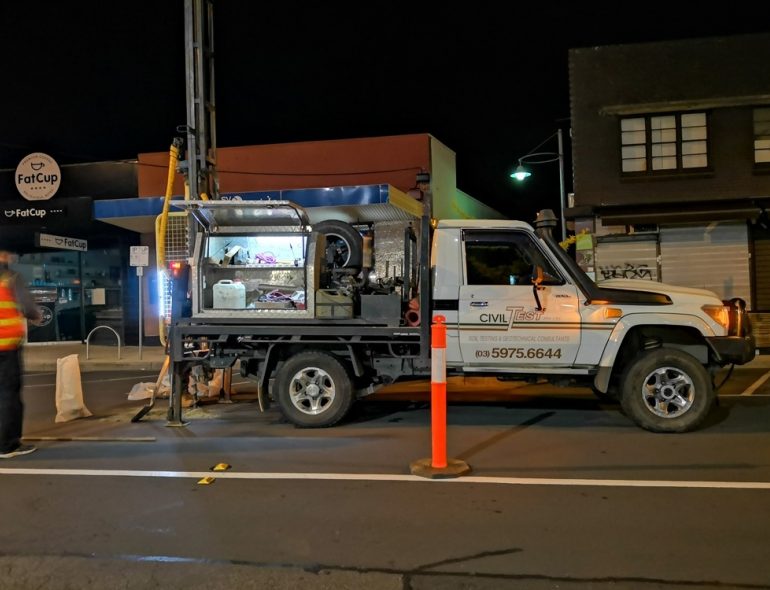
Pavement Investigation for better, safer roads
Pavement investigation for municipal councils is one of Civiltest’s most ‘in demand’ services, particularly in relation to road rehabilitation, reconstruction and extension.
As one of Australia’s most respected geotechnical experts, Civiltest works with councils, project managers, and pavement construction contractors to ensure optimal pavement design which saves significant time and money.
“Every road should begin with the right subgrade – but unfortunately, not every road is built with significant attention to detail in subgrade investigation,” said Jinke Yu, Geotechnical Engineer & Director of Civiltest.
Municipal councils, such as Hobson’s Bay in Melbourne’s western suburbs, call upon Civiltest, to test and assess urban roads that are failing and cracking, to make sure pavements are rebuilt or rehabilitated to the right configuration.
Civiltest are also able to apply this expertise to building new roads or extensions, to ensure it get’s done right the first time.
All pavement designs start with subgrade evaluation, which involves both in situ testing and laboratory analysis.
To conduct the laboratory soaked CBR testing, Civiltest retrieve samples from boreholes or test pits and return them to their specialist laboratory to compact the soil, then soak the samples for a few days before performing penetration testing. Some samples may be treated with lime and/or cement and the effectiveness of subgrade improvement by adding different additives is assessed.
While the design is top-down, construction is bottom-up. A poor or reactive subgrade often needs to be treated before the pavement can be constructed.
Sometimes it is not economical to conduct a significant amount of laboratory soak CBR testing – such as if the road is 10km long. Dynamic Cone Penetrometer (DCP) and Light Weight Deflectometer (LWD) tests are also carried out to assess the in situ CBR and subgrade modulus.
“The next step is obtaining traffic data, so we can assess how much traffic load is expected for the design life of that road. Once the design subgrade CBR value and the traffic loading are determined, we can go ahead to design the pavement thickness and layering,” said Jinke.
It’s advisable to invest in testing before construction of new roads or rehabilitation treatment to get the design CBR value right. The more you spend initially, the less will be spent down the track.
Image: Civiltest undertaking Pavement Investigation at Railway Parade in Blackburn.